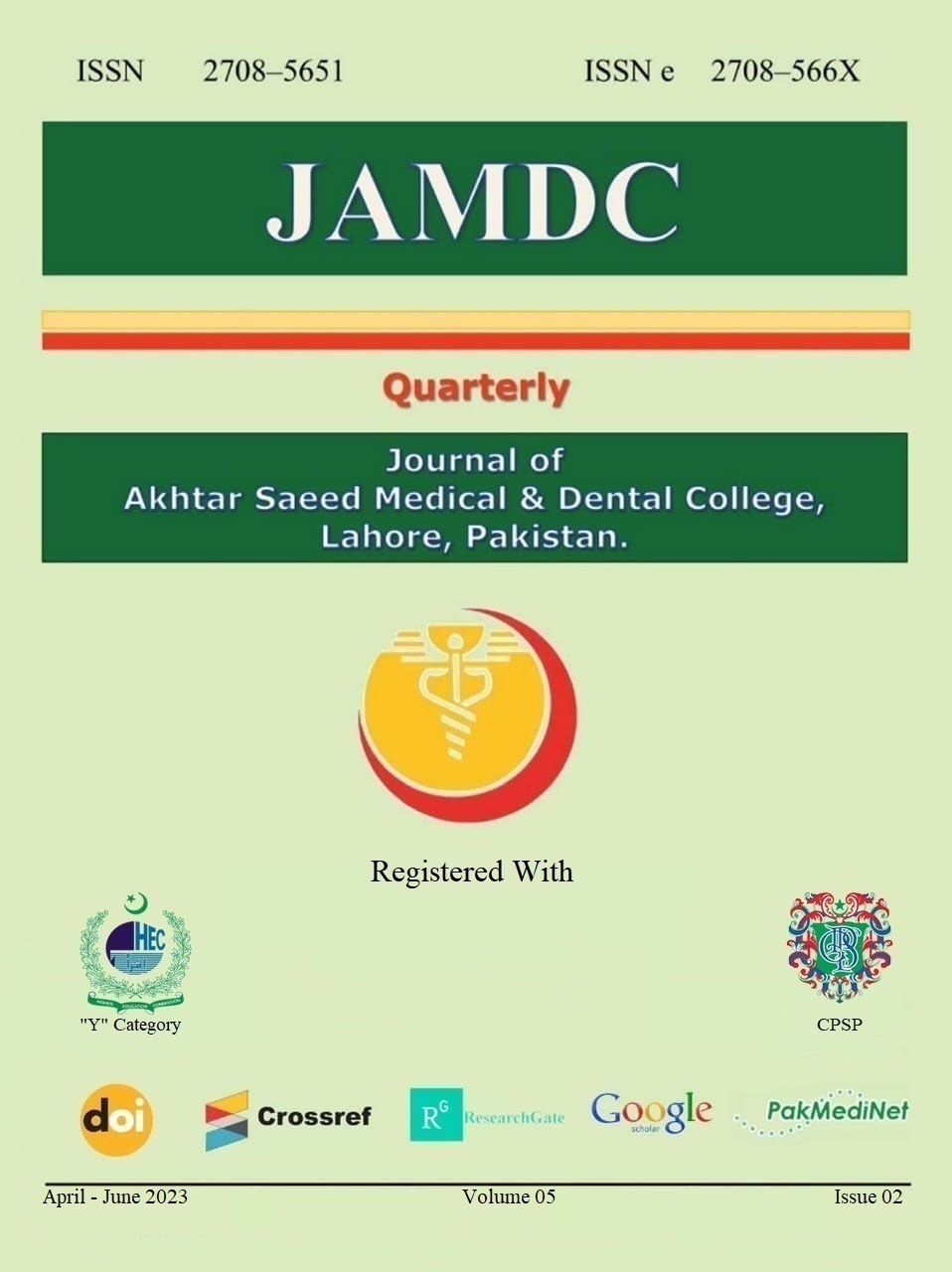Original article RESTLESS LEGS SYNDROME: DIFFERENCE IN QUALITY OF LIFE PARAMETERS BETWEEN HEMODIALYSIS PATIENTS WITH AND WITHOUT RESTLESS LEGS SYNDROME
Keywords:
Restless legs syndrome, hemodialysis, quality of lifeAbstract
ABSTRACT:
Introduction: Majority of abnormal motions that happen during sleep often involve the movement of legs, the most prevalent of which is Restless Legs Syndrome (hereinafter referred to as “RLS”), also known as “Willis Ekbom Disease”. Hemodialysis therapy causes a variety of side effects in individuals with chronic renal disease, notably Restless Legs Syndrome, which can be quite distressing for this patient population. This study seeks to ascertain the incidence of restless legs syndrome amongst people with chronic renal disease receiving hemodialysis in Lahore health facilities.
Material and methods: A non-probability convenience sample of 70 patients with chronic kidney disease receiving hemodialysis was taken in an observational (cross-sectional) research at the Shaikh Zayed National Institute of Kidney Diseases and the Jinnah Hospital in Lahore. Using the widely accepted IRLSSG diagnostic criteria, restless legs syndrome was identified in respondents who answered yes to all questionnaire items. The WHOQOL BREF (World Health Organization QoL Brief Version) assessment was used to examine one's quality of life.
Results: Participants' mean ages ranged from 54.97±9.54 years. 46 (65.7%) of the 70 participants were men, and 24 (34.3%) were women. RLS was observed to be more common in men (62.2%) than that in women (37.8%).Restless legs syndrome was found to be having negative impact on the quality of life in hemodialysis patients, especially in physical and psychological domains.
Conclusion: The quality of life of hemodialysis patients is negatively affected by RLS, with considerable influence on the psychological and physical well-being. As a consequence, medical practitioners ought to do everything possible to recognize and treat RLS symptoms in this demographic at risk.
Key Words: Restless legs syndrome, hemodialysis, quality of life

